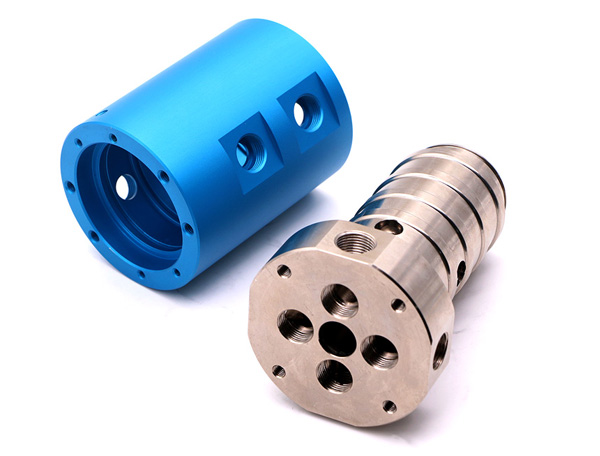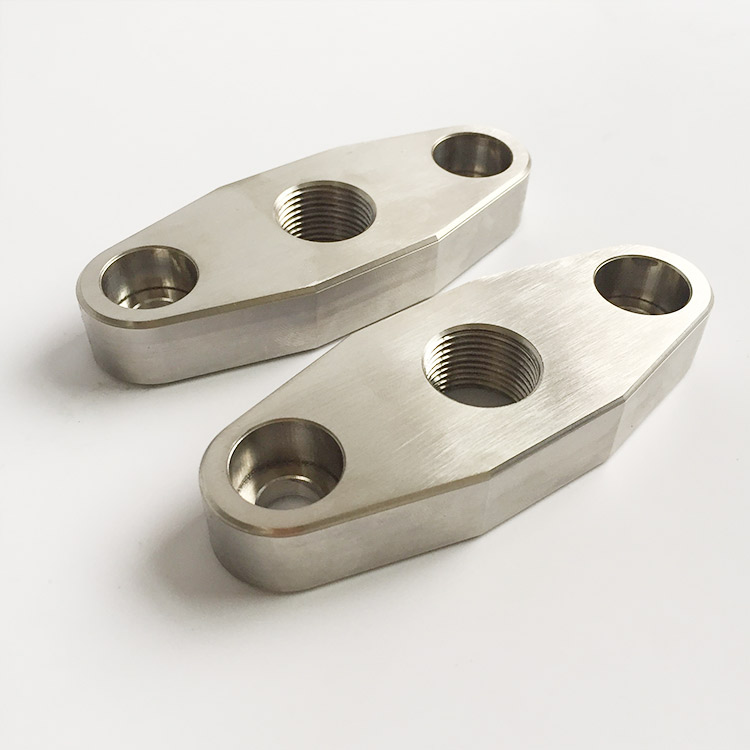15 years one-stop China custom CNC machining parts factory

Hey there I’m VMT Sam!
With 25 years of CNC machining experience we are committed to helping clients overcome 10000 complex part-processing challenges all to contribute to a better life through intelligent manufacturing. Contact us now
 550 |
Published by VMT at Dec 11 2023
550 |
Published by VMT at Dec 11 2023
Ease of CNC Machining: Comparing 304 and 316 Stainless Steel Materials
When it comes to CNC machining, both 304 and 316 stainless steels are commonly used, but they exhibit distinct characteristics that can influence their machinability.
When it comes to CNC machining, the choice between stainless steel grades 304 and 316 involves a delicate balance between machinability and specific application requirements. Let's explore the factors that determine which material is more conducive to CNC machining processes.

Machinability: Generally considered easier to machine than 316.
Composition: Contains a higher percentage of chromium and nickel.
Benefits: Better machinability, making it suitable for a wide range of CNC applications.
Common Uses: Often utilized in less corrosive environments and general-purpose machining.

Machinability: Slightly more challenging to machine compared to 304.
Composition: Contains additional molybdenum for improved corrosion resistance.
Benefits: Enhanced corrosion resistance, making it ideal for applications in harsh environments.
Common Uses: Preferred in marine and chemical processing applications where corrosion resistance is critical.

304 Stainless Steel: Machinability Unleashed
Composition Advantage:
Chromium-Nickel Blend: 304 boasts a composition rich in chromium and nickel, promoting excellent corrosion resistance.
Enhanced Machinability: The lower nickel content makes 304 generally more machinable than 316.
Machining Characteristics:
Tool Compatibility: 304 responds well to a variety of cutting tools, contributing to smoother machining.
Ease of Processing: Its machinability lends itself to a broad range of CNC applications.
316 Stainless Steel: Balancing Act
Additional Alloy Element:
Molybdenum Inclusion: 316 introduces molybdenum to the mix, enhancing corrosion resistance.
Machining Challenge: The higher alloy content, including molybdenum, makes 316 marginally less machinable than 304.
Machining Considerations:
Tool Selection: Machining 316 may require specialized tools to counter its increased hardness.
Optimized Parameters: Adjusting cutting parameters to accommodate the alloy's characteristics.

Choosing the Right Stainless Steel for CNC Machining:
Application Requirements:
Machinability Priority: For projects where ease of machining is a primary concern, 304 may be the preferred choice.
Corrosion Resistance: If the application demands superior corrosion resistance, especially in harsh environments, 316 becomes essential.
Tooling Expertise:
Tool Selection Mastery: Employing cutting tools optimized for stainless steel machining enhances the efficiency of the CNC process.
In the realm of CNC machining, the choice between 304 and 316 hinges on the specific requirements of the project. While 304 shines in terms of machinability, 316 offers enhanced corrosion resistance, striking a balance that aligns with the demands of diverse applications.
Conclusion:
While both 304 and 316 stainless steels can be CNC machined, the choice depends on the specific requirements of the application. If ease of machining is a primary consideration and the environment is less corrosive, 304 stainless steel may be preferred. However, if superior corrosion resistance is paramount, despite slightly more challenging machining, 316 stainless steel becomes the material of choice.
In summary, the decision between 304 and 316 for CNC machining should be based on a careful assessment of the project's requirements, considering factors such as machinability, corrosion resistance, and the intended application.
Ready To Start Your Next Project?
Get Instant Quote

Request a Free Quote
Send us a message if you have any questions or request a quote. We will get back to you ASAP!